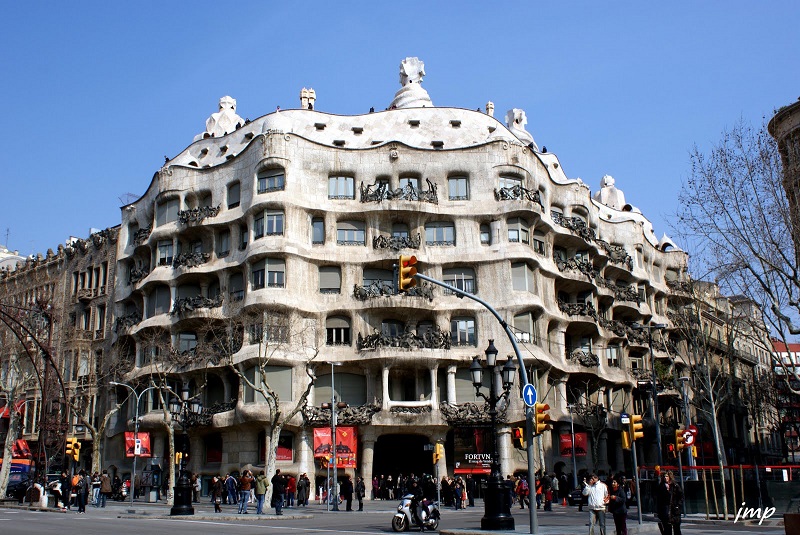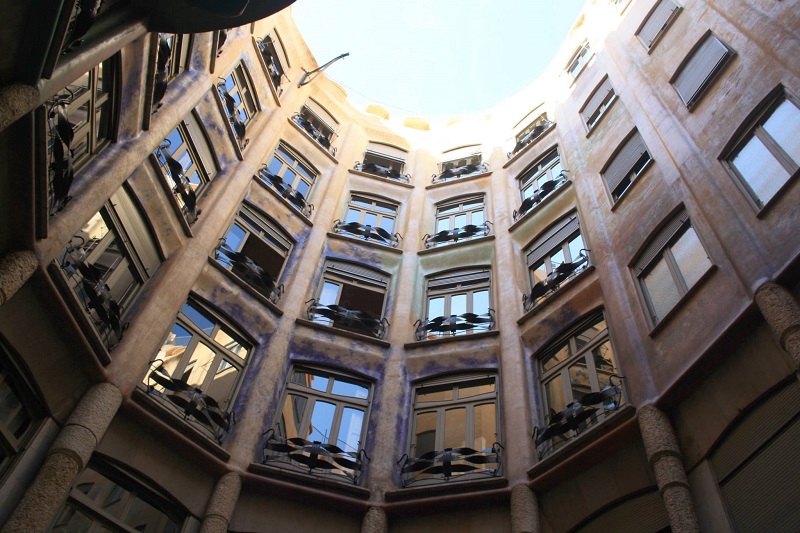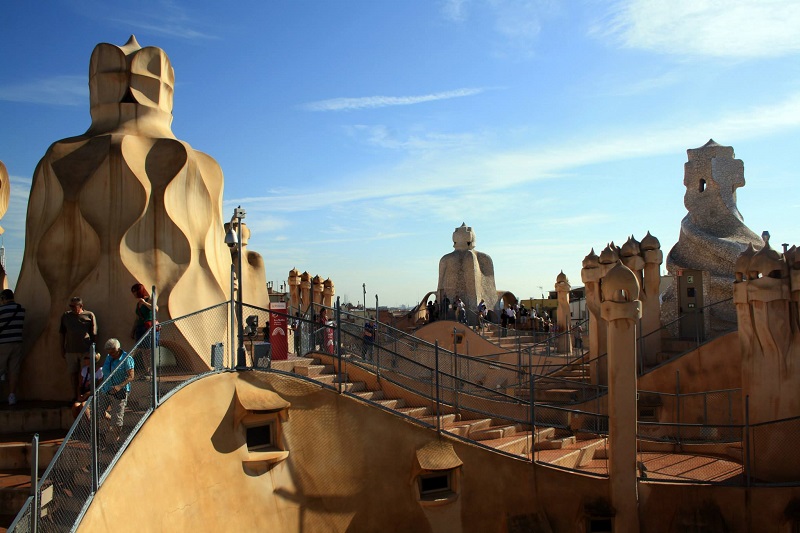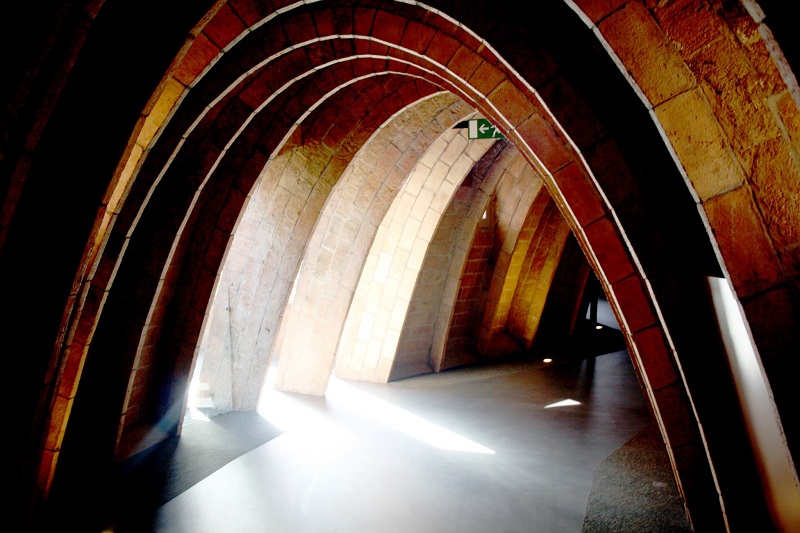Casa Mila
Contents |
[edit] Introduction
Casa Milà, popularly known as ‘La Pedrera’ (the stone quarry), is a Modernist building in Barcelona, Spain. Designed by Antoni Gaudi, it is characterised by its organic-like undulating façade and surrealist sculptural roof.
Built between 1906 and 1910, Casa Milà was commissioned by the industrialist Pere Milà i Camps and his wife. It would be Gaudi’s last civil work and is considered to be one of his most adventurous and innovative designs. However, whereas he had planned it to be spiritually symbolic, clashes over the design meant many of his proposals were dropped, and at one point Gaudi had to be persuaded not to abandon the project.
In 1984, the building was included on the UNESCO World Heritage List and, having been extensively restored, it remains one of Barcelona’s most popular tourist attractions. It is currently the headquarters of the Catalunya-La Pedrera Foundation and contains a cultural centre.
[edit] Design and construction
Casa Milà was designed and built as two apartment blocks, nine storeys tall, linked by two large inner courtyards and a sinuous common façade. The different shapes and sizes of the courtyards give the layout the form of an asymmetric figure 8.
Gaudi’s structural innovations included the separation of the building into structure and skin. The façade, composed of large limestone blocks, is self-supporting, allowing the floor layouts to be free of load-bearing walls. Curved iron beams surrounding the perimeter of each floor connect the façade to the internal structure and provide load-bearing support. This innovation meant Gaudi could design the façade without traditional structural constraints, achieving a continuously curved, organic geometry.
The construction system also allowed large openings in the façade, to provide natural light to the apartments, and enabled internal walls to be modified according to the requirements of occupants.
The roofdeck rises and falls and is adorned with skylights, staircase exits, ventilation fans, and chimneys, all of which are designed as pieces of sculpture. They are constructed using brick covered with lime, broken marble and other ceramics, and were supposedly the source of inspiration for the helmets of Darth Vadar and his stormtroopers in ‘Star Wars’.
The attic is a clear space under a Catalan vault roof, supported by 270 parabolic brick arches of varying heights, spaced apart by about 80 cm. This spine-like rib structure creates the varied topography of the roofdeck.
[edit] Post-construction
The building was designated a historic and artistic monument in 1969, although by this time it had passed into new ownership and been allowed to deteriorate, including having been painted brown. In the late-1980s, it underwent a restoration process, with the façade being cleaning and restored.
The building’s roofdeck has been used in Michelangelo Antonioni’s 1975 film ‘The Passenger’, and Woody Allen’s film ‘Vicky Cristina Barcelona’.
[edit] Find out more
[edit] Related articles on Designing Buildings Wiki
- Antoni Gaudi.
- Building of the week series.
- Buildings in film.
- Ceramics.
- Fallingwater.
- Guggenheim Museum, Bilbao.
- Neuschwanstein Castle.
- Sagrada Familia.
- Villa Savoye.
[edit] External resources
Featured articles and news
UCEM becomes the University of the Built Environment
Major milestone in its 106-year history, follows recent merger with London School of Architecture (LSE).
Professional practical experience for Architects in training
The long process to transform the nature of education and professional practical experience in the Architecture profession following recent reports.
A people-first approach to retrofit
Moving away from the destructive paradigm of fabric-first.
International Electrician Day, 10 June 2025
Celebrating the role of electrical engineers from André-Marie Amperè, today and for the future.
New guide for clients launched at Houses of Parliament
'There has never been a more important time for clients to step up and ...ask the right questions'
The impact of recycled slate tiles
Innovation across the decades.
EPC changes for existing buildings
Changes and their context as the new RdSAP methodology comes into use from 15 June.
Skills England publishes Sector skills needs assessments
Priority areas relating to the built environment highlighted and described in brief.
BSRIA HVAC Market Watch - May 2025 Edition
Heat Pump Market Outlook: Policy, Performance & Refrigerant Trends for 2025–2028.
Committing to EDI in construction with CIOB
Built Environment professional bodies deepen commitment to EDI with two new signatories: CIAT and CICES.
Government Grenfell progress report at a glance
Line by line recomendation overview, with links to more details.
An engaging and lively review of his professional life.
Sustainable heating for listed buildings
A problem that needs to be approached intelligently.
50th Golden anniversary ECA Edmundson apprentice award
Deadline for entries has been extended to Friday 27 June, so don't miss out!
CIAT at the London Festival of Architecture
Designing for Everyone: Breaking Barriers in Inclusive Architecture.
Mixed reactions to apprenticeship and skills reform 2025
A 'welcome shift' for some and a 'backwards step' for others.



























